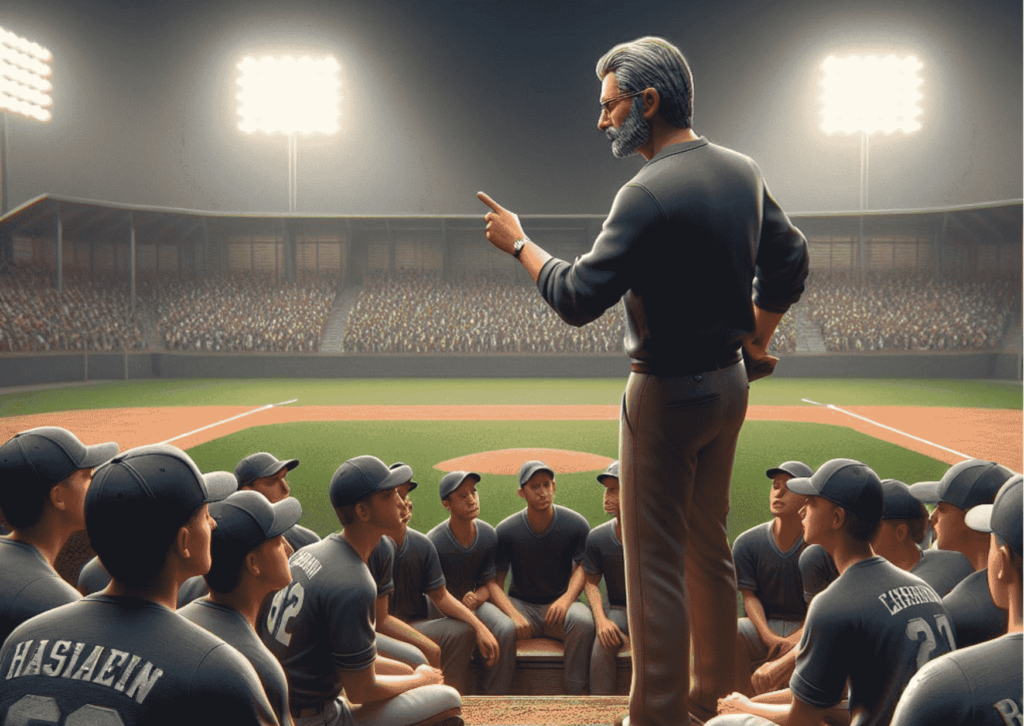- The layout of a baseball field
- HOW MANY PLAYERS ARE ON THE BASEBALL FIELD : Positions on the baseball field
- Roles and responsibilities of each player
- The importance of teamwork in baseball
- Baseball field dimensions and layout
- Common strategies and tactics used on the field
- Defensive Shifts
- Baserunning Tactics
- Variations in player numbers in different baseball leagues
- Historical evolution of the number of players on the baseball field
- Common misconceptions about the number of players in baseball
- The impact of the number of players on the baseball field on gameplay
- The significance of the number of players on the baseball field for fans and spectators
- The importance of teamwork and communication on the field
- Fun facts about the number of players on a baseball field
- Conclusion
- FAQS
- Is there a situation where more than nine players from a team can be on the field?
- How does the size of the field influence the number of players on the field?
- How many players are on the official team roster during the post and regular season?
- How has the number of players on a baseball field evolved over time?
Baseball is a beloved sport that originated in the United States in the 18th century. As the game reflects many aspects of American life, from culture to economics, It’s often referred as America’s pastime. For a lay man may questions came to mind as how many players play in baseball, how many baseball players are on the field, How many baseball players are on the field at once? etc. Baseball is played with a bat, a ball, and gloves. The bat is used by the offensive team to hit the ball, while gloves are worn by players to catch and field the ball. There are two teams of nine player each the offensive team, which bats and tries to score runs, and the defensive team, which fields and tries to prevent the opposing team from scoring A run is scored when a player successfully advances around all four bases on the field and touches home plate.
The layout of a baseball field
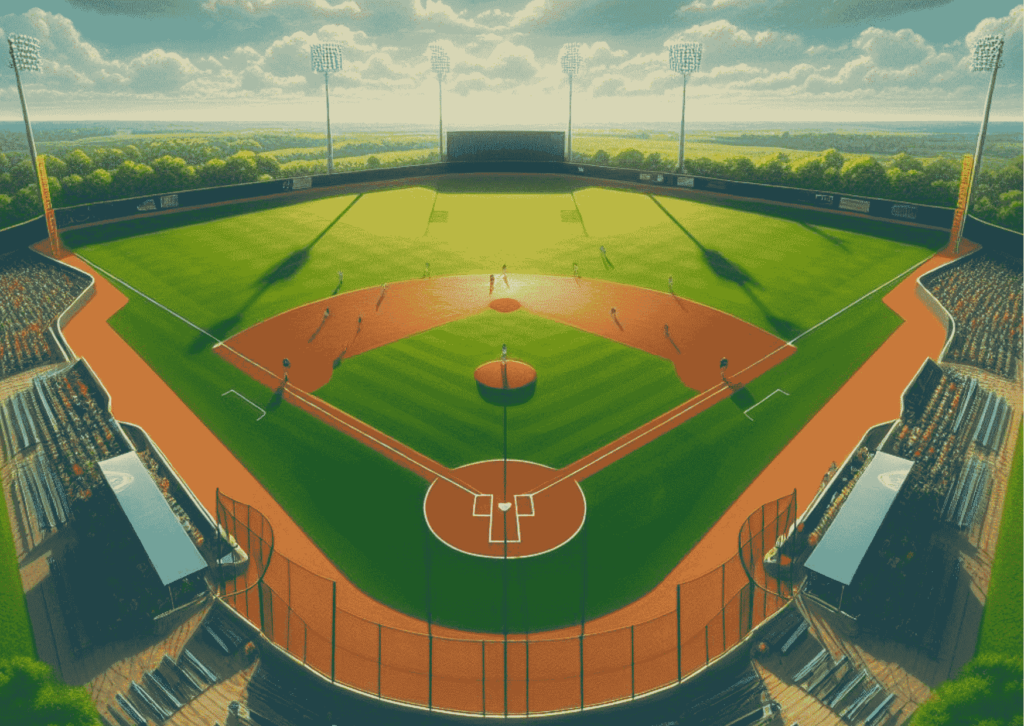
Baseball field consist of 10 elements each have its own requirement, once you familiarize yourself with them you can picturised a baseball field and can answer the question like how many players are on the baseball field, how many players on a baseball field at one time, how many players are on the field in baseball?
These elements consist of the following
- Infield : This is the area within the four bases, each base is 90 ft apart and this is where the magic happens.
- Pitcher’s Mound : The pitcher’s mound is a raised area from which the pitcher delivers the ball to the batter
- Home Plate : Home plate is where the batter stands to hit the ball. It’s also the final destination for runners trying to score a run
- First Base : The first base is positioned to the right of home plate (as viewed from the batter’s perspective)
- Second Base : Positioned directly across from first base, to the left of the batter as they run from home plate. It’s the second base a runner aims to reach when advancing around the bases
- Third Base : Third base is located to the left of home plate, adjacent to second base.
- Outfield : The area beyond the infield is known as the outfield. It’s where fly balls hit by batters are caught or fielded.
- Foul Lines and Foul Territory : Extending from home plate to the outfield are foul lines. Demarcated by pole, a ball hit outside these lines is considered foul. Area outside the foul lines is considered as foul territory.
- Dugout : As the name reflects area where players sit when they are not on the field. Dugouts are typically located along the first and third base lines
- Bullpen : Area outside the field where relief pitchers warm up before entering the game.
HOW MANY PLAYERS ARE ON THE BASEBALL FIELD : Positions on the baseball field
The positions on a baseball field is same, as the answers to the questions like how many players are on the field in baseball? or how many baseball players are on the field? or how many people on a baseball field. Its nine (09) positions that includes Pitcher, Catcher, 1st Baseman, 2nd Baseman, 3rd Baseman, Shortstop, Left Fielder, Center Fielder, Right Fielder. In addition to that designated hitters position is also used in some leagues.
Roles and responsibilities of each player
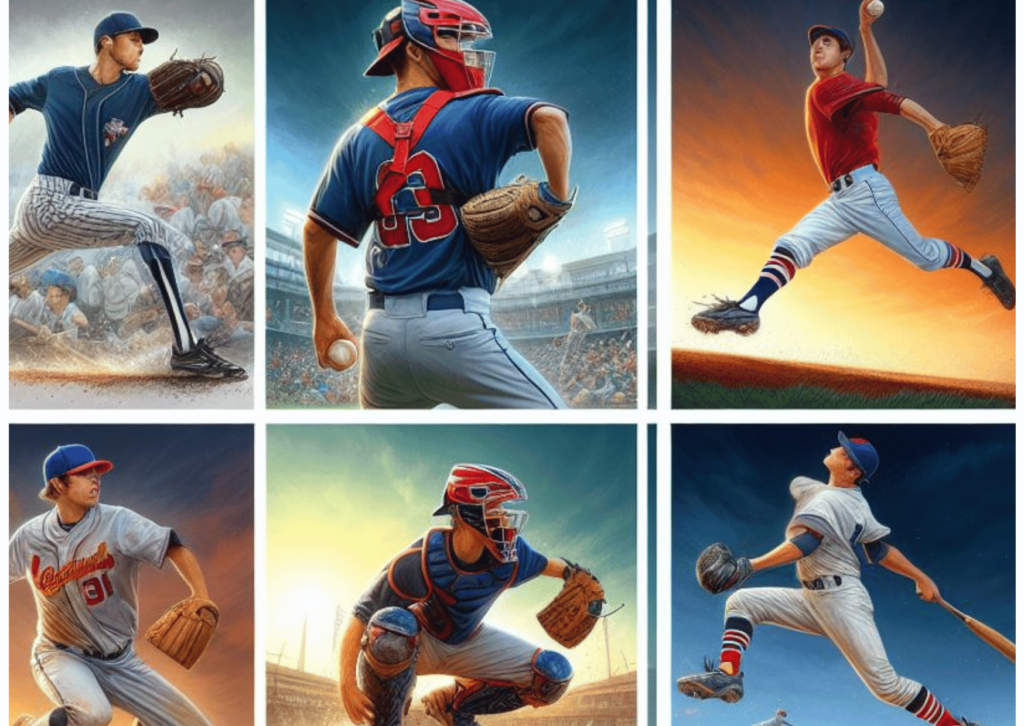
Each player have certain responsibility depending either he or she is playing on the offence or defense. Offence have only one player in the field and that’s batter. The primary role of a batter is to hit the pitched ball into fair territory and reach base safely.
Defense on the other hand have 09 players in the field each have their own responsibility
Pitcher
Primary responsibility is to throw pitches to the batter with the goal of getting them out. Additionally, they are responsible for fielding batted balls hit back to them
Catcher
Their responsibilities include catching pitches from the pitcher, calling pitches, framing pitches to try to get strikes called, and making defensive plays
Infielders
They are responsible for fielding ground balls that hit in their direction and making accurate throws to record outs. They also their respective bases during defensive plays. Infielders are of 04 types.
First Baseman
Positioned near first base
Second Baseman
Positioned near Second base
Shortstop
Positioned between second and third base, the shortstop is often considered one of the most versatile players on the field. They cover a large area of the infield.
Third Baseman
Positioned near third base
Outfielders
They responsible for catching fly balls hit into the outfield, fielding ground balls that make it into the outfield, and making accurate throws to prevent base runners from advancing. Outfielders are of 03 types
Left Fielder
Positioned in left field
Center Fielder
Positioned in center field
Right Fielder
Positioned in Right field
So if someone now asks that how many players on the field in baseball, or how many players are on a baseball field or how many players on a baseball field at one time you can easily answer.
MUST READ:
- WHY DOES CHICAGO HAVE TWO BASEBALL TEAMS
- How Many Acres In A Baseball Field
- How fast can an average person throw a baseball
- WHAT DOES SU MEAN IN BASEBALL
The importance of teamwork in baseball
Teamwork is essential in baseball because it enables players to complement each other’s strengths, provide support and encouragement, communicate effectively, execute strategies, adapt to changing circumstances, and celebrate successes together. A cohesive team that works together toward a common goal is more likely to achieve success on the baseball diamond.
Baseball field dimensions and layout
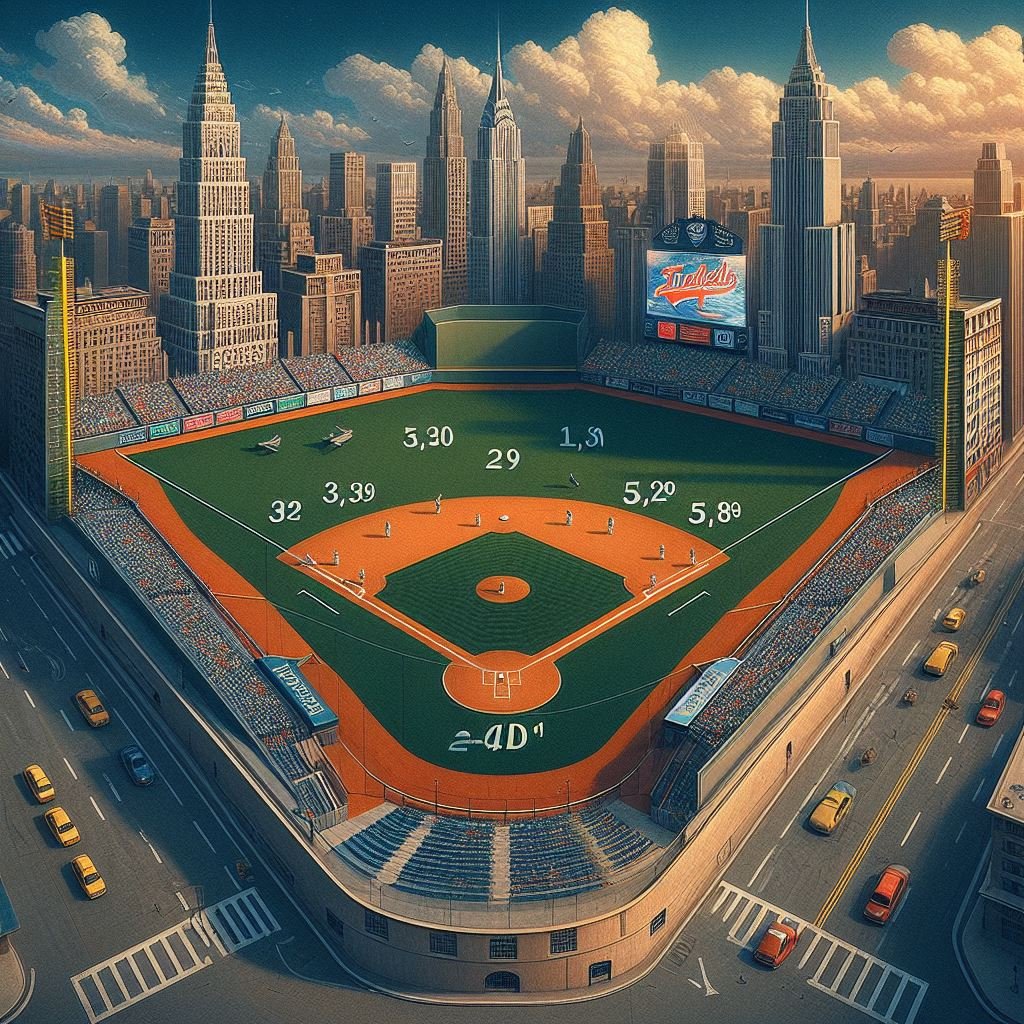
Dimensions and layout elements create the framework for a baseball field, providing the stage for the game to unfold. Dimensions and layout of a baseball field are standardized across professional and amateur leagues, although there can be some variation following are the typical dimensions
- Base Paths : The distance between each base (from the back corner of one base to the back corner of the next) is 90 feet
- Home Plate : It is a 17-inch square with two of the corners removed so that one edge is 17 inches long.
- Pitcher’s Mound : The pitching rubber or mound is a raised rectangular slab that sits 10 inches above the level of home plate. The front edge of the rubber is 60 feet 6 inches
- Fence : The outfield fence marks the boundary of the playing field. The distance from home plate to the outfield fence varies greatly depending on the specific ballpark, but it typically ranges from around 300 to 400 feet to center field and 320 to 350 feet to the left and right field foul poles
- Outfield Wall : The height of the outfield wall can also vary, but it’s typically around 8 to 12 feet high
- Foul Lines : The foul lines extend from home plate to the outfield fence, marking the boundary between fair and foul territory.
- Foul poles : These are the positioned at the intersection of the foul lines and the outfield fence. They help determine whether a ball hit beyond the outfield fence is fair or foul.
Common strategies and tactics used on the field
Baseball is a game rich in strategy, with teams employing various tactics to gain an advantage over their opponents. Each game presents unique challenges, and successful teams must adapt their strategies based on the strengths and weaknesses of their opponents following are some known strategies
Pitching Strategy
- Pitch Selection: Pitchers vary their pitch selection (fastballs, curveballs, sliders, etc.) to keep hitters off balance and exploit their weaknesses.
- Location: Pitchers aim to hit specific locations within the strike zone to induce weak contact or swings and misses
- Pitch Sequencing: Pitchers strategically sequence their pitches to set up hitters for certain pitch types or locations
Defensive Shifts
- Teams may employ defensive shifts, where fielders are repositioned based on the tendencies of specific hitters. For example, infielders may shift to one side of the field to defend against pull hitters
Baserunning Tactics
- Stealing Bases: Base runners attempt to steal bases by timing the pitcher’s delivery and the catcher’s throw to the base. This tactic puts pressure on the defense and can create scoring opportunities
- Hit-and-Run: In a hit-and-run play, the base runner on first base starts running with the pitch, while the batter attempts to make contact with the ball. This tactic can open up holes in the defense and advance the runner
Offensive Strategies
- Small Ball: Some teams employ a “small ball” strategy, focusing on advancing runners through bunts, sacrifice flies, and situational hitting rather than relying solely on power hitting
- Hitting for Power: Other teams emphasize power hitting, aiming to hit home runs and extra-base hits to drive in runs quickly
Pitching Changes
- Managers make pitching changes to match up against specific hitters or to exploit platoon advantages (e.g., bringing in a left-handed pitcher to face a left-handed hitter
Defensive Signals
- Catchers and infielders use hand signals to communicate defensive alignments and strategies, such as pitch location or pitchouts to prevent stolen bases
Variations in player numbers in different baseball leagues
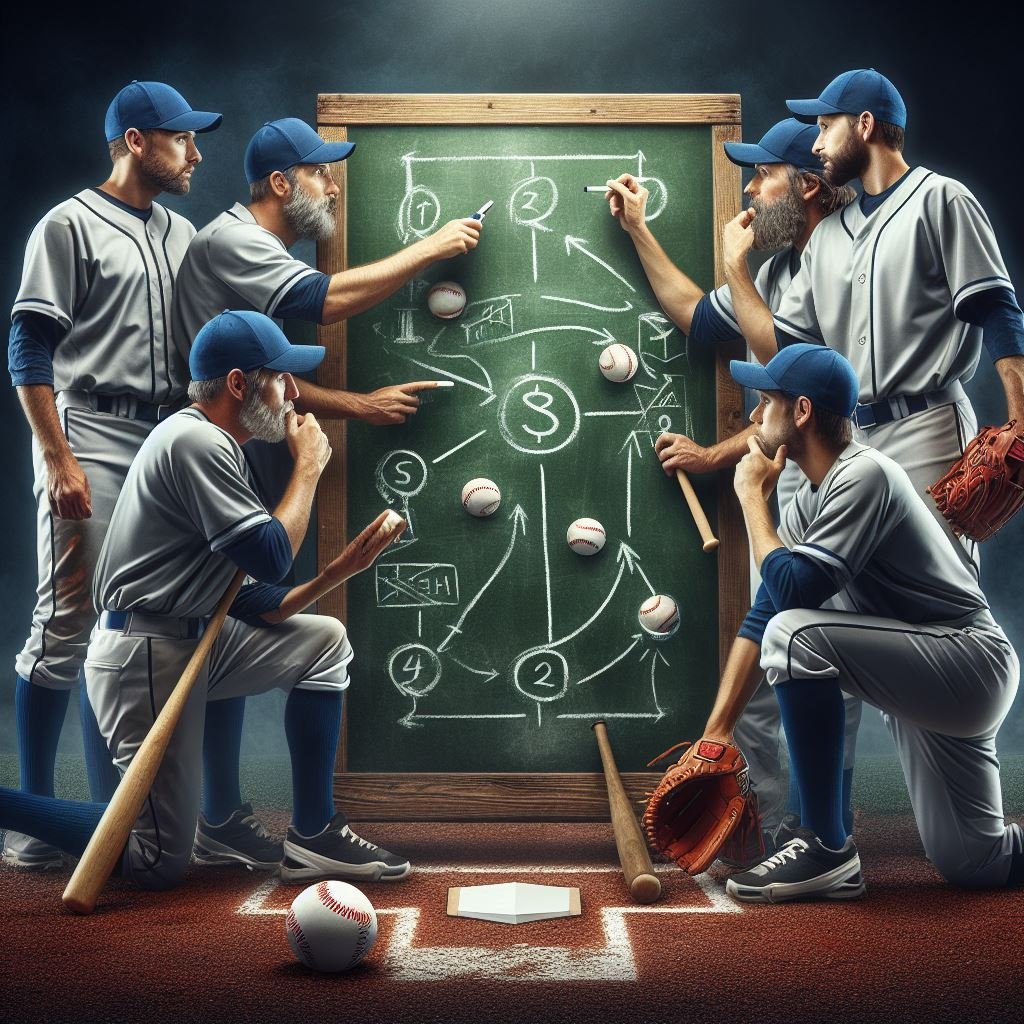
The answer to the question how many players in baseball game or how many players play in baseball became tricky if dug deeper. The most common number of players on a team is 25 during the regular season. However, there can be variations in player numbers in different leagues following are some examples.
- Major League Baseball :MLB teams typically have a 25-man active roster during the regular season. However, roster sizes can expand to 40 players in September when teams can call up additional players from their minor leagues.
- Minor League Baseball : MiLB Roster sizes in Minor League Baseball vary depending on the level of play and the specific league. Generally, teams have smaller rosters compared to MLB teams, typically ranging from 25 to 35 players
- International Leagues : Baseball leagues outside the United States may have different roster sizes and rules regarding player numbers. For example, leagues in Japan (Nippon Professional Baseball), South Korea (KBO League), and other countries may have different roster limits.
- Independent Leagues : Baseball leagues, which operate outside the organized structure of Major League Baseball and its affiliated minor leagues, have their own roster sizes. These leagues often have smaller budgets and have smaller rosters compared to affiliated minor league teams
- Youth Leagues and Amateur Baseball : In youth baseball leagues and amateur leagues, roster sizes can vary widely based on the age group, level of play, and league rules.
So now if anyone asks how many players on baseball field or how many players play in baseball inquire about the league they are referring. To make matter worse lets dig more and make the answers to the questions how many players on the field in baseball, or how many players are on a baseball field or how many players on a baseball field at one time even more complicated.
MUST READ:
- how many stitches are on a mlb baseball
- What Is a No-No in Baseball: Exploring the Rare Feat
- What is a Fancy Place to Catch a Baseball Game?
- What Does MRP Mean in Baseball
Historical evolution of the number of players on the baseball field
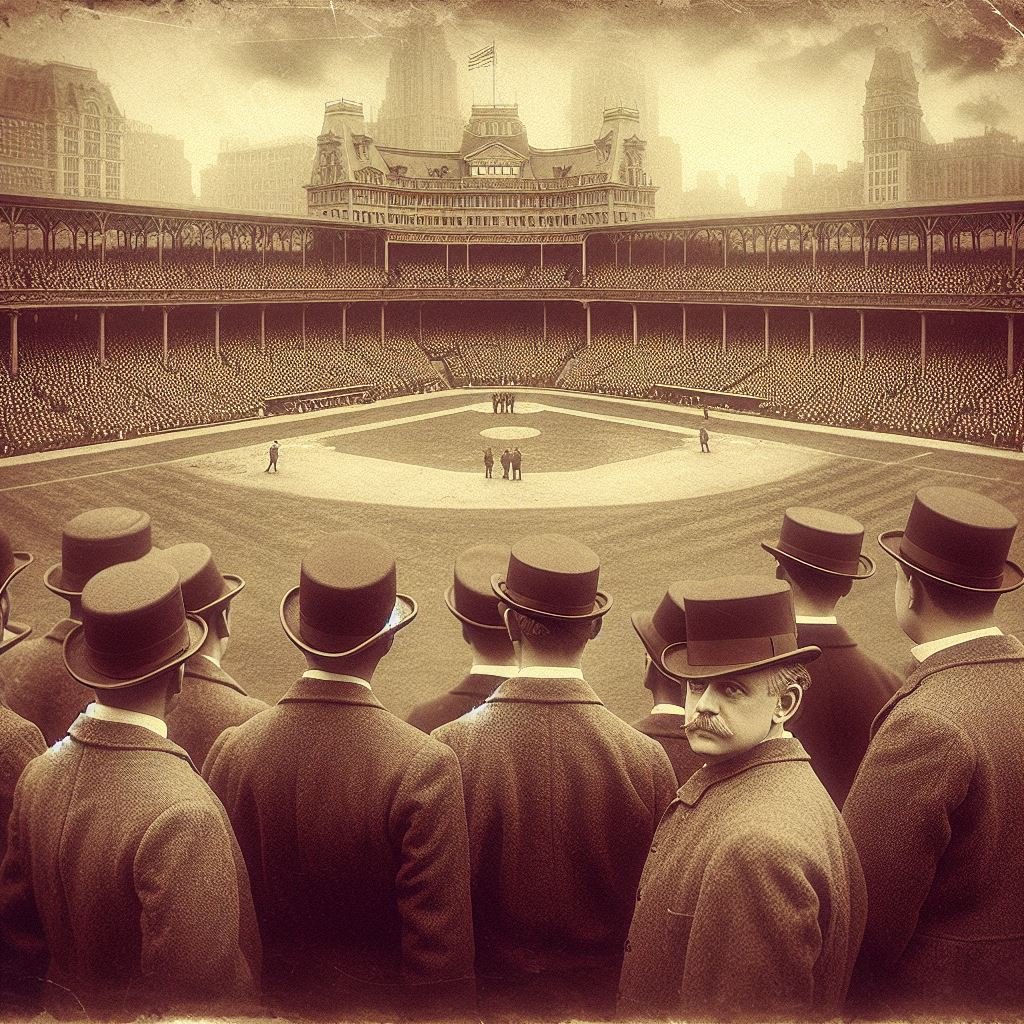
Number of player in the baseball has evolved over time. In the early days of baseball in the 19th century, there were no standardized rules, and the number of players on the field could vary widely depending on the local rules. Then in 1845 New York Knickerbockers specified nine players per team which became the Knickerbocker Rule eventually became standard. In 1871 the first professional baseball league “National Association of Professional Base Ball Players” was founded this association also followed the Knickerbocker nine player format. later on other leagues like National League established in 1876, The American League, founded in 1901 all stick to Knickerbocker Rule. Then after 70 years American League introduced the designated hitter (DH) rule, allowing teams to use a designated hitter to bat in place of the pitcher without having to play a defensive position this increase the number to 10.
So, please inquire about the league and time in history if you were asked that how many players on baseball field or how many players play in baseball
Common misconceptions about the number of players in baseball
Misconceptions can arise due to the complexity of baseball rules and the variations that exist between different leagues and levels of play. Understanding the nuances of player roles and roster sizes can help clarify these misconceptions, following are some common misconceptions.
- While it’s true that there are nine defensive players on the field for each team during a standard game, some people may mistakenly believe that this number is fixed at all times. In reality, there are situations, such as when a player is substituted or ejected, where a team may have fewer than nine players on the field temporarily.
- Leagues that use the designated hitter (DH) rule, such as the American League in Major League Baseball, some people may assume that the pitcher is counted as the tenth player in the batting order. However, with the DH, the pitcher does not bat, and the DH typically occupies the ninth spot in the batting order.
- While Major League Baseball teams typically have 25 players on their active roster during the regular season, this number can vary based on circumstances such as roster expansions in September or special situations like doubleheaders
- There may be misconceptions about the pitcher’s role as a fielder. While the pitcher is a key defensive player, they are not always involved in fielding every ball hit into play. They have specific responsibilities on the mound, and other fielders are responsible for making plays on balls hit into the field
The impact of the number of players on the baseball field on gameplay
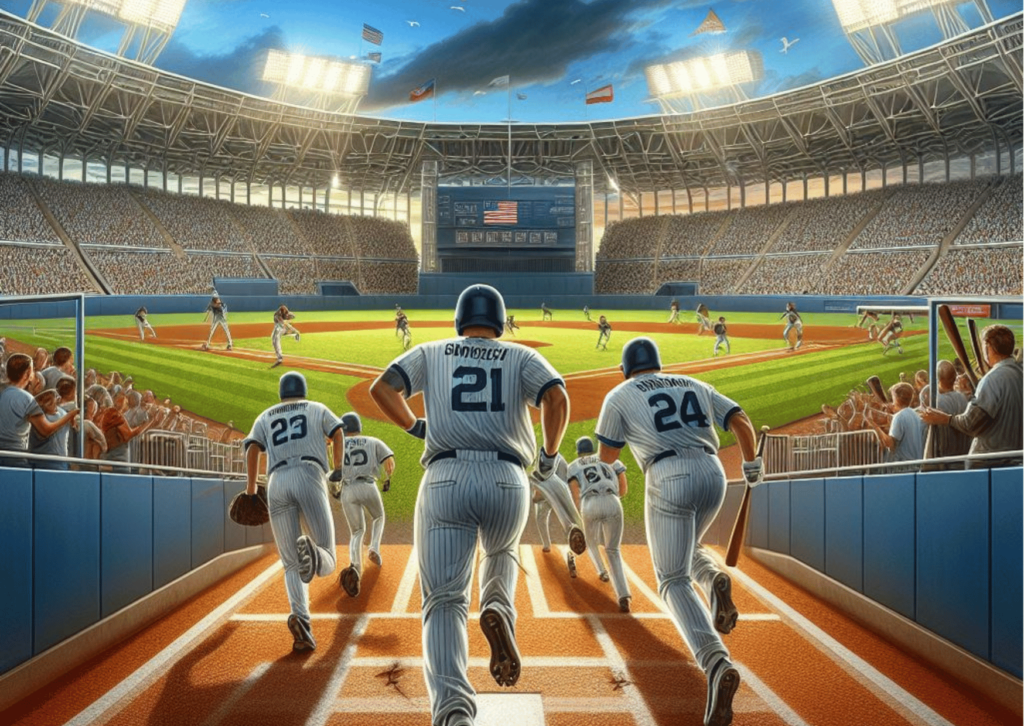
The number of players on the baseball field shapes the spectator experience by providing a framework for understanding the game’s strategy, dynamics, and individual performances. Fans appreciate the tradition, complexity, and excitement that come with nine players on each team, making baseball a timeless and captivating sport.
The significance of the number of players on the baseball field for fans and spectators
Baseball has been depicted in various movies, TV shows, and works of fiction. The number of players on the field is often a central element of these portrayals, showcasing the camaraderie, teamwork, and drama inherent in the game. It seems that every one is interested in the answers of the questions that how many players on the field in baseball, or how many players are on a baseball field or how many players on a baseball field at one time. These complicated rules also have poetic symmetry to the game with nine players on each team and nine innings in a standard baseball game. Each inning provides an opportunity for every player to contribute to their team’s success on both offense and defense.
The importance of teamwork and communication on the field
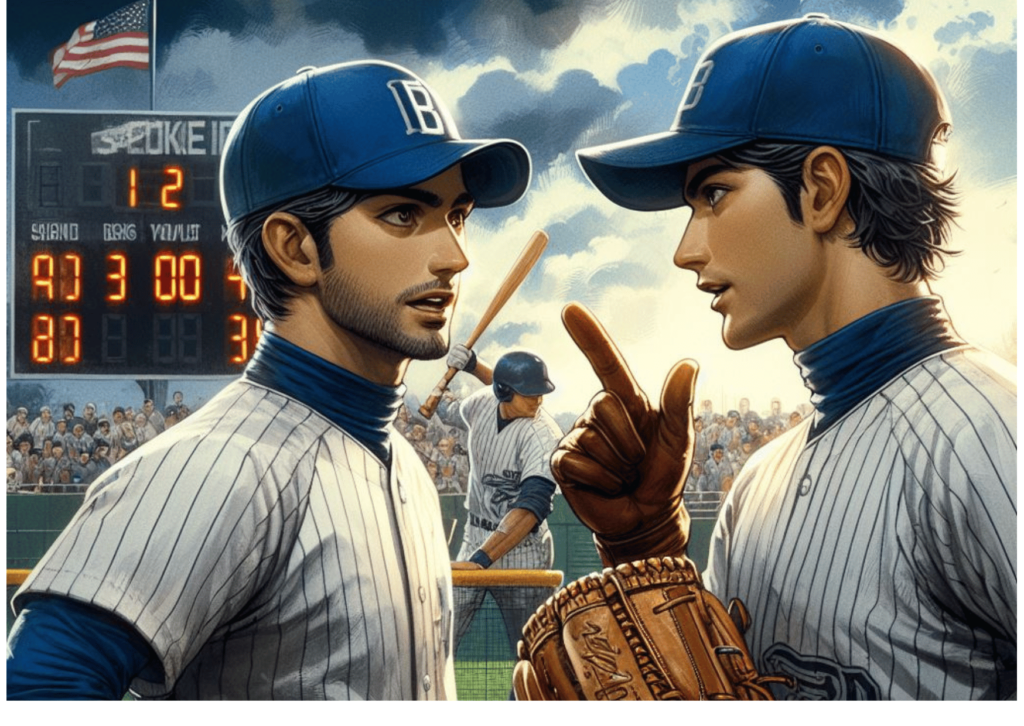
Teamwork and communication are essential elements of success in baseball, enabling players to work together seamlessly, anticipate each other’s actions, and execute plays with precision and efficiency. A cohesive team that communicates effectively is better equipped to handle the challenges and complexities of the game, ultimately leading to greater success on the field.
Fun facts about the number of players on a baseball field
- Designated Hitter Rule In 1973, the American League adopted the Designated Hitter Rule. This allowed teams to substitute a 10th player for the pitcher. It shows how strategic and technological thinking can affect a game as old as baseball.
- The Pitcher’s Dual Role It is interesting to see that in the National League, the pitcher plays both a defensive and offensive role. He throws the ball so as to stop the other team scoring. The dual role of the pitcher in baseball highlights how versatile players must be to play both on offense and defence.
- Field Size The size of a field can also influence the number of baseball players. In order to effectively cover a larger area, more players are needed. Here’s an example of the way practical factors can influence the structure and rules of a sports.
- History In early baseball teams would often have more than nine players. As the sport became more standard, it was decided to reduce the number of players to nine in order to maintain a balanced and fair competition. It is clear how baseball evolved through the years, while maintaining a delicate equilibrium between tradition and modernity.
Conclusion
Number of players on the baseball field is not merely a technical aspect of the game but a fundamental component that shapes the dynamics, strategies, and traditions of baseball. With nine players on each team, the field becomes a stage where teamwork, communication, and individual skills converge to create the rich tapestry of America’s pastime. From the symmetry of nine players mirroring nine innings to the strategic maneuvers of managers navigating roster decisions, the number of players on the field weaves a narrative of tradition, strategy, and collective effort. Whether it’s the precise execution of a double play, the strategic substitution of a pinch hitter, or the camaraderie shared on the bench, the significance of each player’s role underscores the essence of teamwork and collaboration in baseball. As fans and spectators, we celebrate the magic of nine players on the field, recognizing that within this framework lies the beauty, complexity, and enduring appeal of the game
MUST READ:
- What Hide Was First Used to Cover Baseballs in 1975?
- What is Kip Leather: A Comprehensive Guide
- what your baseball position says about you?
FAQS
Is there a situation where more than nine players from a team can be on the field?
Traditionally, only nine players from a team are allowed on the field at any given time during a baseball game. However, in the American League, the Designated Hitter rule introduced in 1973 allows teams to use a tenth player to bat in place of the pitcher.
How does the size of the field influence the number of players on the field?
The size of a baseball field necessitates nine players to effectively cover the area. A larger field would require more players to cover it effectively, but standardization rules maintain the number of players at nine.
How many players are on the official team roster during the post and regular season?
The official team roster during the post and regular season usually contains 26 active players. However, only nine players from each team are allowed on the field at any given time during a game.
How has the number of players on a baseball field evolved over time?
In the early days of baseball, teams often fielded more than nine players. As the game progressed towards standardization, the number was reduced to nine to ensure a fair and balanced competition. This underscores the dynamic evolution of baseball, striking a balance between tradition and innovation.

I’m Bruce Brandon, and I’ve spent over a decade immersing myself in the dynamic world of sports blogging. Fuelled by a passion for athletics since my early years, I’ve transformed my love for sports into a fulfilling career that has left a lasting impact on digital sports communities.
Throughout my career, I’ve covered an extensive array of sports. My versatility and breadth of knowledge have garnered recognition within the blogging community, establishing me as a respected voice in sports journalism.
I believe in the importance of accuracy, objectivity, and ethical conduct, and strive to uphold these principles in every piece of content I produce.
As I continue to leave my mark on the world of sports blogging, I hope to inspire others with my passion, expertise, and dedication to excellence. With each article I write and each insight I share, I aim to contribute positively to the discourse surrounding sports in the digital age.
